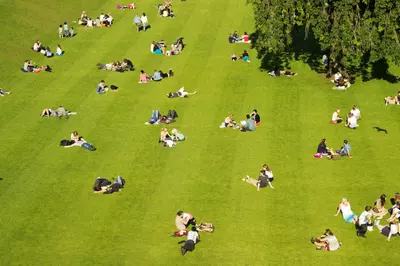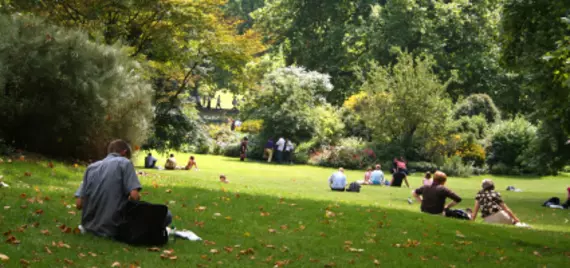What Is the Role of Community Spaces and Services?

Another essential aspect of community that affects individual wellbeing is the infrastructure—the physical spaces and services that meet the community’s needs.
Infrastructure can help build social networks
Infrastructure can have large impact on the development of social networks and the subsequent values of community participation and civic engagement. For example, common spaces where members of a community can interact (libraries, parks, community centers) can help build and sustain social networks.
Infrastructure can provide equity
Infrastructure not only helps build social networks, which allow community members to share information and opportunities, it provides essential resources. A community that works to ensure equal access to these resources promotes the wellbeing of individuals and the community as a whole.
Infrastructure can promote healthy behaviors
Infrastructure can also remove barriers to healthy behaviors. For example, people will walk more in a community where it feels safe to do so—whether that means sidewalks on busy streets, better lighting, or a neighborhood watch program. They will also find walking more appealing if there are attractive green spaces.

The benefits of green space
A research study suggests that residents in Chicago public housing who had trees and green space around their building reported knowing more people, having stronger feelings of unity with neighbors, being more concerned with helping and supporting each other, and having stronger feelings of belonging than tenants in buildings without trees.
In addition to this greater sense of community, they had a reduced risk of street crime, lower levels of violence, and less aggression between domestic partners. All because the city added plants!
Infrastructure can support wellbeing for all--if there is equitable access
Below are some of the main aspects of infrastructure that can help support individual wellbeing in a wide variety of ways, from meeting basic human needs, to helping develop social capital, to making healthy choices easier. Note that is it essential that these resources be available to everyone in the community and there is a deliberate effort to ensure equity for all marginalized groups. One of the characteristics of systemic racism is lack of access to the same quantity and quality of community assets and services.
Housing
- Adequate housing opportunities at all income levels
- Equal access to financing for all races
- Absence of covenants or other racial or religious restrictions
Transportation
- Affordable and accessible mass transit
- Well-planned and maintained roads and highway grids
- Bike and pedestrian pathways
Public Education
- Safe and effective K-12 schools
- Multiple opportunities for secondary education
- Adult education and training
Parks, Recreation and the Arts
- Accessible and well-kept parks and green spaces
- Community centers
- Access to culture and the arts
- Libraries
Public Safety and Emergency Services
- Efficient and trustworthy law enforcement
- Adequate emergency services
Healthcare and Human Services
- Healthcare options for all
- Child and family services
- Disability and senior services
Communications
- Mail, landline and mobile phones
- Internet
Government and Legal
- Honest and responsive political system
- Effective, just, and equitable court and legal system
Diener, E., Seligman, M. (2009). Beyond money. In Diener, E. (Ed.), The science of well-being: The collected works of Ed Diener. New York: Springer.
Haworth, J. T., Hart, G., (ed). (2007). Well-being. New York: Palgrave Macmillan.
Miller, W. D. (2011). Healthy homes and communities: Putting the pieces together. American Journal of Preventive Medicine, 40(1).
Prilleltensky, I., & Prilleltensky, O. (2006). Promoting well-being: Linking personal, organizational, and community change. Hoboken, NJ: Wiley.
Strong Neighborhoods Task Force (SNTF) of Toronto. (2004). Role of Community Infrastructure in Building Strong Neighborhoods. Accessed April 14, 2013 at http://www.toronto.ca/demographics/sntf/rp2.pdf



